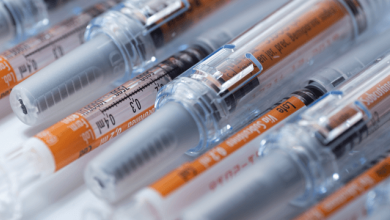Search results
Author(s):
Lucy Blows
,
Simon Redwood
Added:
3 years ago
Transforming a critically narrowed coronary vessel to one that is angiographically smooth and unobstructed is immensely satisfying. However, if the procedure is examined in its component parts, it is surprising that this technique is considered safe with minimal overt clinical complications. Temporary vessel occlusion renders the downstream myocardium ischaemic, while vessel trauma initiates…
View more
Author(s):
Akshyaya Pradhan
,
Monika Bhandari
,
Pravesh Vishwakarma
,
et al
Added:
3 years ago
Author(s):
Lucy Blows
,
Simon Redwood
Added:
3 years ago
Transforming a critically narrowed coronary vessel to one that is angiographically smooth and unobstructed is immensely satisfying. However, if the procedure is examined in its component parts, it is surprising that this technique is considered safe with minimal overt clinical complications. Temporary vessel occlusion renders the downstream myocardium ischaemic, while vessel trauma initiates…
View more
Author(s):
Eberhard Grube
,
Lutz Buellesfeld
Added:
3 years ago
Despite major advances in catheter-based therapy and adjunctive pharmacology, percutaneous revascularisation of diseased saphenous vein bypass grafts (SVGs) remains a critical challenge for the interventional cardiologist. Degeneration and occlusion of vein grafts is a common problem with an incidence of 15% to 30% in year one after surgery, 1% to 2% annual occlusion rates in years one to six and…
View more
Author(s):
Eberhard Grube
,
Lutz Buellesfeld
Added:
3 years ago
Despite major advances in catheter-based therapy and adjunctive pharmacology, percutaneous revascularisation of diseased saphenous vein bypass grafts (SVGs) remains a critical challenge for the interventional cardiologist. Degeneration and occlusion of vein grafts is a common problem with an incidence of 15% to 30% in year one after surgery, 1% to 2% annual occlusion rates in years one to six and…
View more
Author(s):
David Antoniucci
Added:
3 years ago
In the setting of acute myocardial infarction (AMI), spontaneous and percutaneous coronary intervention (PCI)-related embolisation results in a decreased efficacy of mechanical reperfusion and myocardial salvage. Direct stenting without predilation may decrease embolisation and the incidence of the no-reflow phenomenon.1,2 More specific approaches to the problem of microvessel embolisation during…
View more
Author(s):
Sebastian Kelle
,
Eike Nagel
Added:
3 years ago
Magnetic resonance imaging (MRI) is a powerful imaging modality for diagnostic cardiology and research. This imaging method provides combined diagnostic information of different tissue characteristics, such as the visualisation of the vascular tree and cardiac anatomy and function, as well as measurements of blood flow in the vessels, ventricular wall motion, myocardial perfusion and viability…
View more
Author(s):
Dariusz Dudek
,
Jacek Legutko
,
Roman Wojdyła
,
et al
Added:
3 years ago
Thrombectomy for patients with ST elevation myocardial infarction (STEMI) is an evolving issue. Randomised studies on suction and thrombectomy devices in a whole spectrum of STEMI patients provide conflicting results. New European Society of Cardiology (ESC) percutaneous coronary intervention (PCI) guidelines do not give definitive recommendations regarding the use of embolic protection devices…
View more
Author(s):
Dariusz Dudek
,
Jacek Legutko
,
Roman Wojdyła
,
et al
Added:
3 years ago
Thrombectomy for patients with ST elevation myocardial infarction (STEMI) is an evolving issue. Randomised studies on suction and thrombectomy devices in a whole spectrum of STEMI patients provide conflicting results. New European Society of Cardiology (ESC) percutaneous coronary intervention (PCI) guidelines do not give definitive recommendations regarding the use of embolic protection devices…
View more
Author(s):
Ardawan Julian Rastan
,
Friedrich W Mohr
Added:
3 years ago
Adverse clinical consequences associated with conventional coronary artery bypass surgery (CCAB) have largely been attributed to cardiopulmonary bypass circuit (CPB), hypothermic cardiac arrest, aortic cannulation and cross-clamping. Consequently, there has been a growing interest in safer alternatives to CCAB including off-pump beating heart bypass surgery (OPCAB). Since the introduction of…
View more










